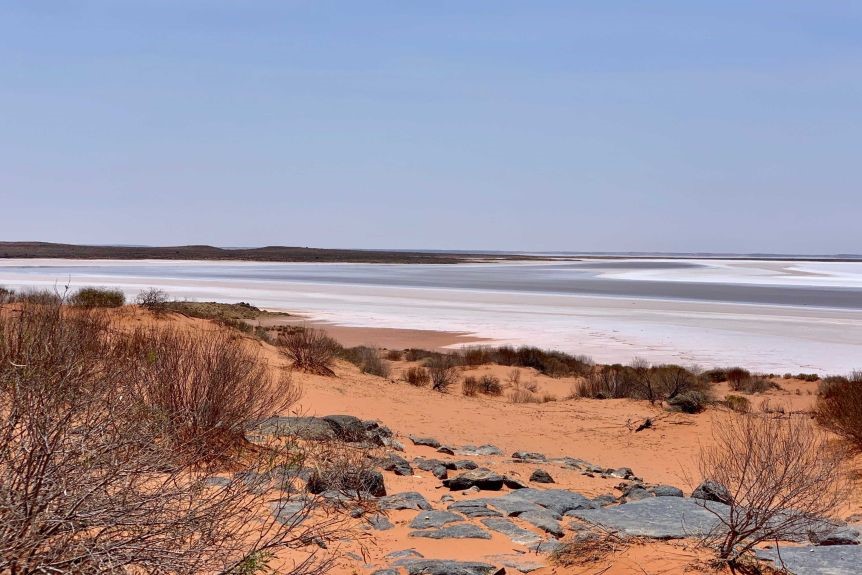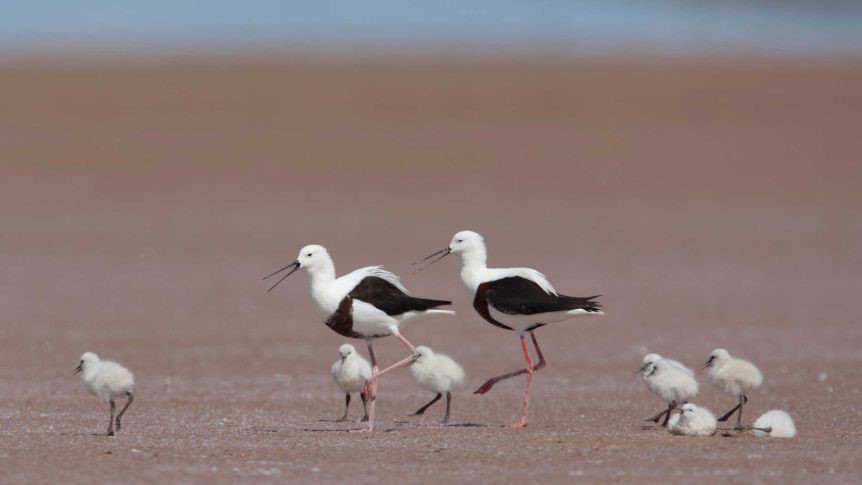No to mining Lake Torrens!
Written by: Nick G. on 6 March 2021
 The South Australian government has trampled all over the state’s Aboriginal Heritage Act (AHA) to approve the drilling of exploratory mining holes into the surface of Lake Torrens, a salt lake situated to the south of Lake Eyre. It is also a site of importance for three bird species.
The South Australian government has trampled all over the state’s Aboriginal Heritage Act (AHA) to approve the drilling of exploratory mining holes into the surface of Lake Torrens, a salt lake situated to the south of Lake Eyre. It is also a site of importance for three bird species.
Dry for the summer months, the lake extends for 250 kilometres north to south and has an average width of 30 kilometres. Its northern tip is to the east of Roxby Downs, the town servicing Olympic Dam, the fourth largest copper deposit and the largest known single deposit of uranium in the world. The Olympic Dam mine is owned and operated by BHP.
Exploratory drilling of Lake Torrens began in 2008 when a previous Labor government overruled Kokatha and Adnyamathanha objections. It has been held up because of legal action taken by these First Peoples. They have been joined by Kuyani and Barngala people who also hold parts of the Lake to be sacred.
The language of the Section 23 provision of the AHA which allows the government to overrule Aboriginal Heritage listings is particularly blunt: it gives the exploration company permission to "damage, disturb or interfere" with any sacred Aboriginal site, objects or remains. Ironically, the state’s National Parks and Wildlife Service calls on visitors to show respect by not touching or removing anything.
Exploration activities at the lake will include gravity in-fill surveys, deep diamond exploration drilling, creation of new access tracks, upgrading existing access tracks, drilling for water bores, construction of a new exploration camp on Andamooka Island, vegetation clearing, and the construction of multiple lake access points.
Kuyani woman Regina McKenzie said, “Money speaks louder than protection of the environment — short-term gain speaks louder.
“When they do find the ore bodies they're looking for, they're then going to say to us ‘for the good of the state, we're going to do mining’.
“Our rights are always trampled on, our rights are always looked at in a negative way.
“This is my culture; my culture is the oldest living culture in the world and it's disrespected in this way.”
Environmental concerns
Closely connected to First Peoples’ ceremony and songlines are the environmental issues raised by the granting of the exploration licenses.
Sixty-four species of bird were recorded when the lake contained water, many breeding. Winter rains create standing bodies of water on the lake critical to the survival of the Red-capped Plover and the Cinnamon Quail Thrush. This water also provides one of seven known breeding sites in Australia for the Banded Stilt which feeds on tiny shrimps that thrive in the waters.
Banded stilt numbers vary according to winter rainfall. In 1989, when the lake was filled with water, 75,000 pairs were recoded.
Despite these relatively healthy sounding numbers, the state’s National Parks and Wildlife Act lists the Banded Stilt as vulnerable because huge numbers of chicks are taken at the lake each year by seagulls. Several scientific studies suggest that the large numbers of gulls at these sites are related to population increases from anthropogenic resources in coastal areas and rural townships. Anthropogenic, ie human, activity on and around the lake associated with mineral exploration is likely to increase seagull numbers and hence the vulnerability of the Banded Stilt during its breeding season.
Water
The exploration company, Kelaray, is a subsidiary of Australian uranium miner Argonaut Resources, which also holds exploration licenses in the Lake Frome area, nearby to existing, licensed uranium production sites.
It hopes to find underneath Lake Torrens, iron oxide copper-gold mineralisation similar to those at Olympic Dam. The company boasts that its exploration license has a greater “footprint” than Olympic Dam. The possible consequences of them finding what they want beneath the lake and then proceeding to extraction, include further demands on the precious waters of the Great Artesian Basin (GAB). Although that groundwater resource does not extend as far south as the lake, Olympic Dam pumps 35 megalitres of GAB water each day from two bore fields which are located 110 km and 200 km to the north of the mine. Olympic Dam is the largest industrial user of underground water in the southern hemisphere. Its water use has restricted, and in some cases stopped, the flow of water from Aboriginal mound springs along the Oodnadatta Track, and caused northern pastoralists to dig deeper bores to access the depleted GAB waters.
The consequences of any requirement for water of an actual mine on or under Lake Torrens will be disastrous for outback ecology.
We agree with Regina McKenzie that the short term gains of capital accumulation speak louder than the rights of traditional owners and of the environment.
Mining on or under Lake Torrens will be destructive.
Capitalist greed and its “at all costs” pursuit of private profit must be stopped and the common good upheld.
Print Version - new window Email article
-----
Go back
Independence from Imperialism
People's Rights & Liberties
Community and Environment
Marxism Today
International
Articles
| Why did heroes succeed after police leadership and ASIO fail at Bondi? |
| 8000 Rising Tide protesters enforce Newcastle Port shutdown |
| Modern slavery contributes to Supercars championship profits |
| People's struggle continues against SA government " love affair" with property developers and their $1 per year rent! |
| Book Review: The New Age of Sexism |
| Tuvalu: global warming forces diplomatic reappraisal |
| The uphill struggle to protect NSW’s Koalas |
| We have strength to stop Israel’s participation in cycling’s Tour Down Under |
| We welcome the call for a climate-based and more independent foreign policy. |
| Sovereign Citizens: A few inconvenient home-truths for the centre-right |
| That old divide and conquer songbook |
| Toe to toe with fossil fuel induced global warming |
| Save our Oceans rally in Adelaide |
| Resistance to Capitalist Climate Disaster |
| Large rally and march in Adelaide to celebrate first people's struggles and culture |
| Why Australia’s “deforestation” ranking ignores deforestation |
| SA toxic algal bloom persists under wintry conditions |
| Drought |
| Book Review: Terraglossia |
| Residential aged care - for people's needs or private profit? |
-----

